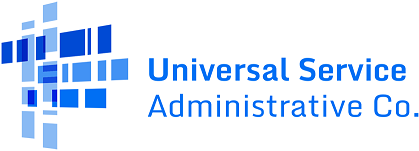Consumer Eligibility
Consumers qualify for Lifeline through income or through participation in a Lifeline-qualifying program. Only one Lifeline benefit is allowed per household.
Jump To
- Determine Eligibility with the NV
- Income Eligibility
- Program Eligibility
- One per Household
- Survivor Eligibility
Determine Eligibility with the NV
Service providers must use the National Verifier (NV) to determine eligibility for consumers (except in California, Oregon, and Texas – the National Lifeline Accountability Database (NLAD) opt-out states). Consumers may also apply for the Lifeline program on their own, using the NV. Visit the How to Use the NV page for more information.
Income Eligibility
Consumers may qualify for the Lifeline program if they have a gross household income at or below 135% of the Federal Poverty Guidelines.
The table below reflects 135% of the 2024 Federal Poverty Guidelines (FPG).
| Household Size | 48 Contiguous States, DC, & Territories | Alaska | Hawaii |
| 1 person | $20,331 | $25,394 | $23,369 |
| 2 people | $27,594 | $34,479 | $31,725 |
| 3 people | $34,857 | $43,565 | $40,082 |
| 4 people | $42,120 | $52,650 | $48,438 |
| 5 people | $49,383 | $61,736 | $56,795 |
| 6 people | $56,646 | $70,821 | $65,151 |
| 7 people | $63,909 | $79,907 | $73,508 |
| 8 people | $71,172 | $88,992 | $81,864 |
| For each additional person, add | $7,263 | $9,086 | $8,357 |
Note: The Federal Poverty Guidelines are adjusted annually, and the above chart reflects guidelines for 2024.
Program Eligibility
Consumers may be eligible for the Lifeline program if they participate in a qualifying program below:
- Supplemental Nutrition Assistance Program (SNAP)
- Participants of the Nutrition Assistance Programs in Puerto Rico, American Samoa, and the Northern Mariana Island are eligible for the Lifeline benefit.
- Review this list of SNAP program names by state.
- Medicaid
- Review this list of Medicaid program names by state.
- Supplemental Security Income (SSI)
- Federal Public Housing Assistance (FPHA)
- To find contact information for a local Public Housing Agency, visit the U.S. Department of Housing and Urban Development’s state contact and agency listing.
- Veterans and Survivors Pension Benefit
In addition to the programs listed above and through the income-qualifying standard, consumers living on Tribal lands may also use the following Tribally-administered programs to qualify for Lifeline.
- Bureau of Indian Affairs General Assistance
- Tribally-Administered Temporary Assistance to Needy Families (TANF)
- Tribal Head Start
- Head Start Program eligibility only refers to those households that have already met the income-qualifying standard.
- Food Distribution Program on Indian Reservations (FDPIR)
- Although the Food Distribution Program on Indian Reservations (FDPIR) is a federal program, administered by the Food and Nutrition Service (FNS), award letters are generally provided by either an Indian Tribal Organization (ITO) or another state agency.
- Review this list of state agency contacts for FDPIR to learn more.
One per Household
For the purposes of the Lifeline program, a household is defined as anyone living at the same address who share income and household expenses. Only one Lifeline benefit is allowed per household.
A Lifeline Household Worksheet must be completed any time more than one subscriber at a single residential address receives Lifeline-supported service, or when a new consumer applies for service at an address where there is already a subscriber receiving the Lifeline benefit.
Survivor Eligibility
Under the Safe Connections Act (SCA), survivors experiencing financial hardship will be able to qualify and receive emergency Lifeline support for up to six months, if they pursue a line separation request. Qualifying survivors can receive a discount of up to $9.25 on phone, internet, or bundled services. Visit the Safe Connections Act page to learn more.
